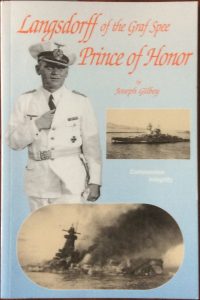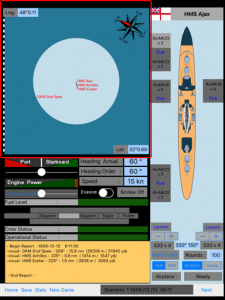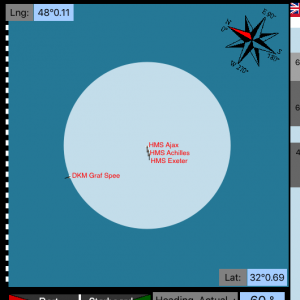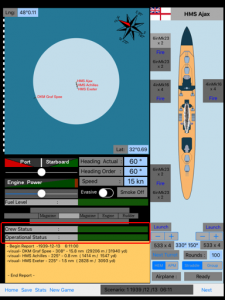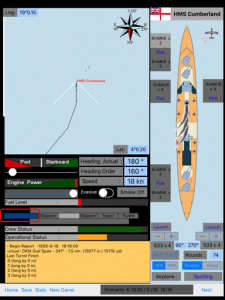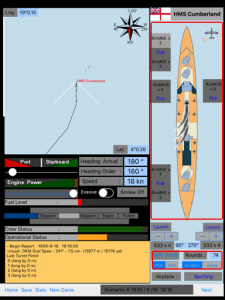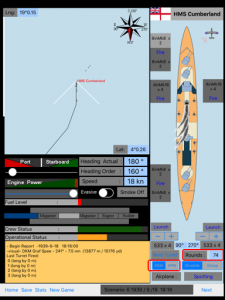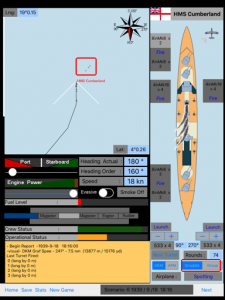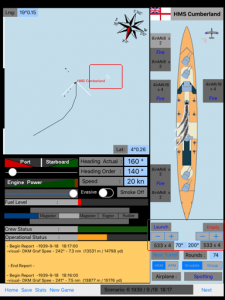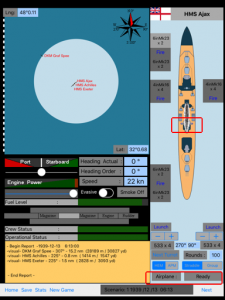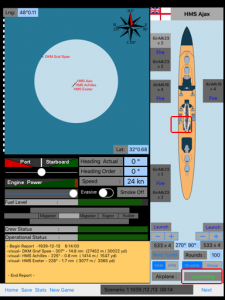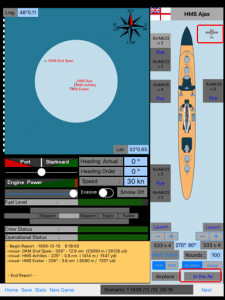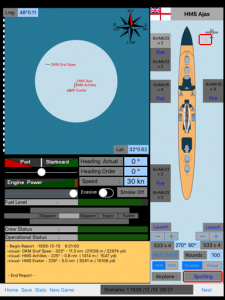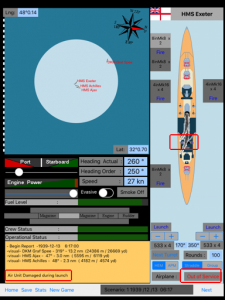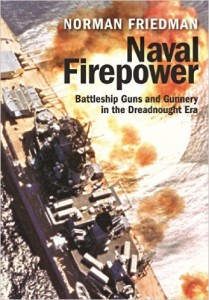 What is it about ?
What is it about ?
DKM Graf Spee is a simulation of Naval Warfare. It will allow you to recreate the actual battle of the Rio de Plata and play also “what-if” scenario. Find here Historical background and biography.
The game is turn based. Each turn duration is one minute and the turn start by orders for the Axis side and then orders for the Allied side.
How do I start to play?
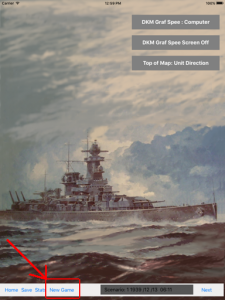
From the “Home” screen, choose “New Game” and then choose one the scenario.
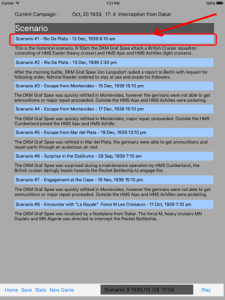
We recommend the Scenario 1 (Historical Rio De Plata engagement), this way you can apply Commodore Harwood strategy. At the prompt screen you will choose Continue.
Coming back to the “Home” screen, you can verify the settings:
DKM Graf Spee: Computer
DKM Graf Spee Screen Off
Top of the Map: Unit Direction
You will also have now the scenario information in the bottom bar dark grey area.
The “Next” button will move screen to review the KriegsMarine main screen, another “Next” will provide the Allied (Royal Navy in this scenario) Main Screen.
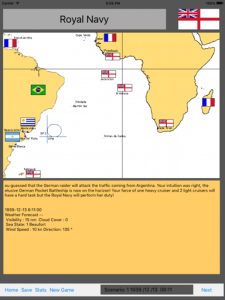
The main screen contain weather information in a scrollable window (last 5 minutes of info).
The “Next” screen will start your units review and orders, see detailed information on the following:
Map, Speed, Heading and Steering
Boat and Crew Status
Gunnery Instructions
Torpedo Instructions
Observation Plane Instructions
The “Next” button will allow the review and orders to the 3 different units under your command in the scenario 1 (HMS Ajax, HMS Achilles and HMS Exeter).
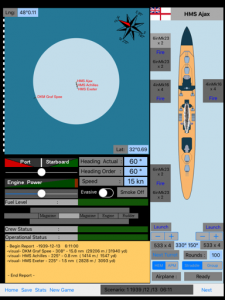
After HMS Exeter all orders will be executed,
including eventually gunnery resolution and torpedoes courses. The clock will tick one minute and the next turn will start.
Winning and Scoring
The goal of the allied Cruisers Squadron was to cause enough damage to the DKM Graf Spee to cripple her. Each boat has a point value which correspond to 100% of the operational value. The damage level required to cripple the DKM Graf Spee is 50% of the operational status. Your score (winning points) is the ratio of damages to the Graf Spee and total damages on your units.
For all information, please email info@softwim.com
